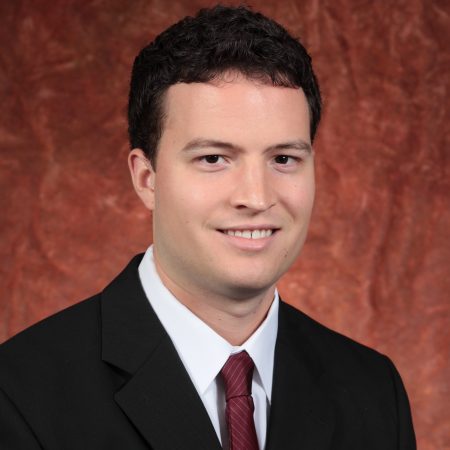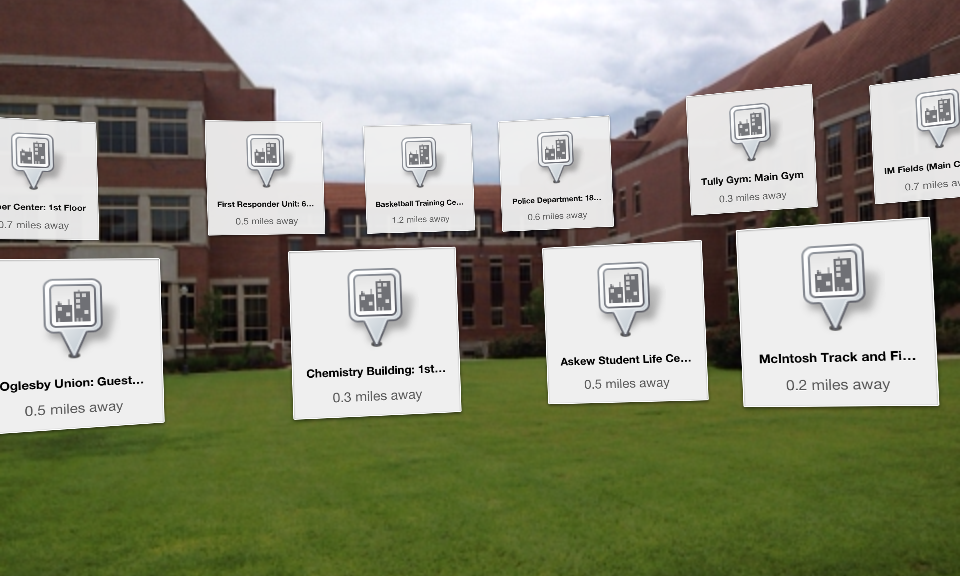
Imagine the person walking in front of you by Stadium Drive falls to the ground in cardiac arrest, and you urgently need a defibrillator to shock his heart back into rhythm. How do you find the nearest one on the Florida State University campus?
Now there’s an app for that. Second-year College of Medicine student Ryan Berger has created an application that turns your mobile phone into a portable AED detector. (AED stands for “automated external defibrillator.”) The app can give you a list of every AED on Florida State’s campus, show you a picture of each site and guide you step by step to the closest ones.
“I was very impressed by Ryan’s idea,” said Dan Bulecza, director of FSU’s First Responder student volunteers. “Spending hours to go building to building to find them, take pictures of them, map the coordinates? That’s a daunting task. When he said he’d do it, we thought: This is fantastic.”
Berger estimates he and classmate Jesse O’Shea spent two months, off and on, walking across campus and collaborating with Florida State’s Information Technology Services to create this app. It’s found under the “Places” category in the free FSU Mobile app. (Currently only iPhone or iPad users may open “Places.”) Touching your current location on the map, then touching the red icon beside it, activates your iPhone’s camera, showing you what lies ahead as you walk. Icons representing nearby AEDs pop up on your screen. As you walk toward an AED, the icon gets bigger, and you get updates on how far away it is.
Granted, a university has a young population not usually associated with cardiac arrest. But with faculty, staff and visitors, Bulecza wants as many AEDs as possible readily available. FSU Police Department vehicles carry AEDs. So do the vehicles used by Bulecza’s 52 First Responder student volunteers. “But if we know there’s one right there in a campus building,” he said, “that’s less equipment we have to bring in. Time is muscle. Anytime the heart is not beating properly, your muscle is starting to deteriorate.”
The AED walks you through what to do, after you’ve called 911 and applied CPR.
“We encourage everybody to take a CPR class,” Bulecza said, “and that way they’ll learn about an AED.”
Berger conceived this summer research project after his class learned CPR.
“I was asking students, ‘Do you know where all the AEDs are in the building?’ No one could really tell me,” he said. “Then I thought, ‘Surely there’s an app or something that tells where they are.’ I looked on Google and contacted the FSU Police Department and First Responders, and there wasn’t an online map of AEDs on campus.

“Then I wanted to see what other schools were doing. Some schools do have online maps, but to my knowledge I’ve never seen an actual mobile map of AEDs that schools are using.
So he got busy. Besides Bulecza and O’Shea, Berger is quick to credit the others who helped him: FSU Police Chief David Perry, FSU Mobile’s Debbie Kelly and Berger’s faculty mentor, Medical Informatics Director Nancy Clark.
When he’s no longer on campus, he hopes the college’s Emergency Medicine Interest Group can coordinate with the First Responders to keep the app updated. He also hopes this information eventually can be posted on the FSU website, for those without mobile phones. The key, Berger said, is for people to get familiar with it now, not wait for an emergency.
“I’m trying to implement a system that would actually save someone’s life,” he said. “I don’t own the software rights. I don’t have a concept of how to market it. Let’s try to use this and increase the probability that someone’s going to actually find an AED faster.”
Berger can see other ways in which this technology can enhance safety, such as directing students to the nearest fire extinguisher or emergency blue light telephone. He’d also like to see it expand beyond campus.
“I think the future of medicine,” he said, “is empowering patients with the technology and knowledge to take charge of their own health care.”
Here is the app in iTunes. Visit myFSU-Mobile for more information.




